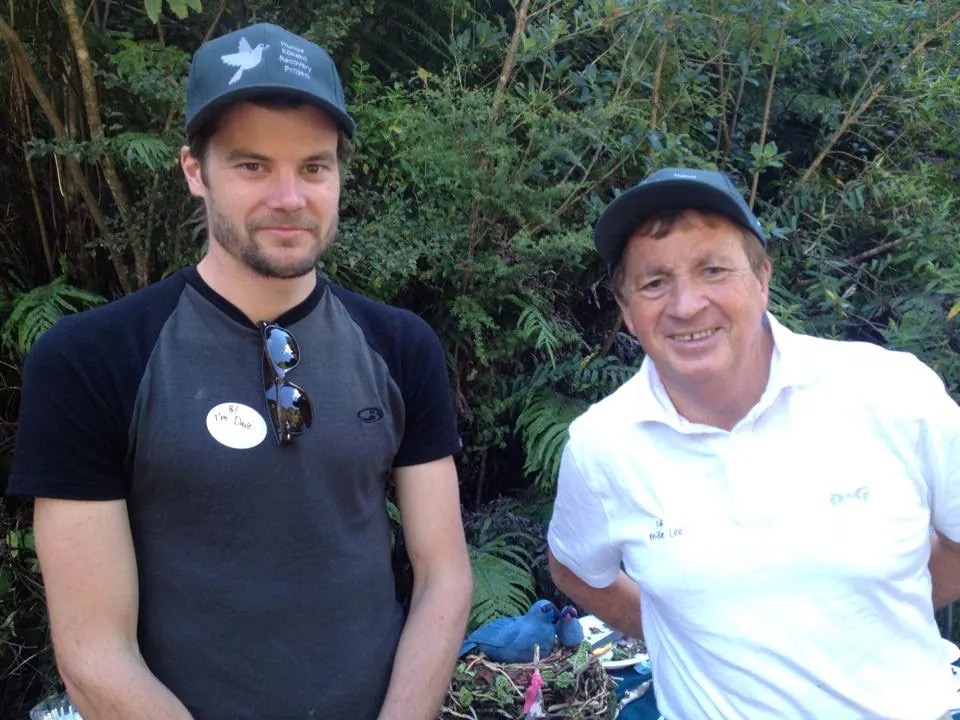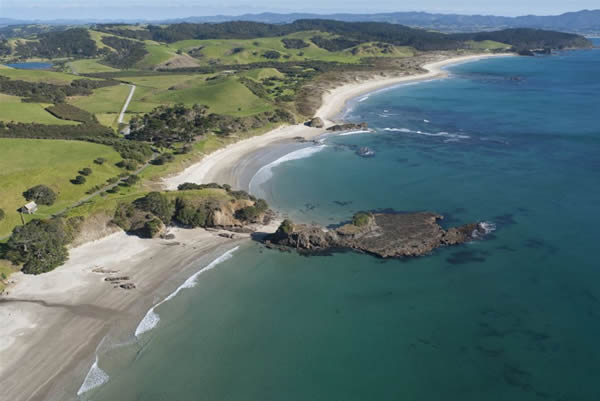Saving the Hunua kokako – speech at the 20th anniversary celebrations
It is an honour to be with you today, 20 years after the establishment of the Kokako Management Area in the Hunua Ranges, to share in the celebration of your great achievement.
As we know, about thirty years ago it became evident that the North Island kokako was critically endangered. At that time a cohort of older birds – long-lived males – some of which had ‘paired’ amongst themselves – died off, thereby unmasking that the numbers of breeding birds were actually very low. So low that populations were nearly unsustainable. Many of them were unsustainable and some disappeared almost overnight.
My personal role in this long difficult project was actually quite easy because the decision to actively protect the Hunua kokako was (rather unusually) a political initiative.
I was elected to the former Auckland Regional Council (ARC) in a by-election in early 1992 – the most junior member in the 28-member body that was in effect still the old Auckland Regional Authority. As a result of the local government reforms of that year – a new 13 member ARC was elected at the elections in October and in a few months I went from being the most junior member of the Council to being chairman of the Regional Parks Committee. The Auckland Regional Parks Service was one of the most prestigious in New Zealand local government at that time – built up over many years by the famous Phil Jew, its General Manager.
As an active Forest & Bird member, I was aware of the plight of the kokako and I was also mindful of the special conservation values of the Hunua Ranges. As Sir Charles Fleming once put it, one of those ‘skylines of native forest, that represents the mystery and adventure of the unknown to every youngster on farm or suburban homes.’
I was also aware of the recent breakthrough success achieved at Mapara State Forest by Department of Conservation (DOC) field scientists Phil Bradfield, Phil Thomson and Hazel Speed and John Innes of Landcare Research. Together they pioneered by ‘research by management’ the ‘mainland island’ concept, protecting kokako nests (and everything else) from possums, rats and stoats, with grids of bait stations and traps.
At my first meeting with Phil Jew late in 1992, I raised the question of the Hunua kokako and asked for a report on their status. I followed this up with a letter (there being no such things as emails in those days). As it happened a kokako survey took place in the Ranges a few weeks later, the participants a combination of ARC rangers, DOC people, OSNZ members and volunteers.
A report on the survey was written up by Parks scientist Brenda Green in time for the March 1993 Parks Committee agenda. The report confirmed the serious decline in kokako numbers (very accurately as it turned out) to less than 30 birds. The report concluded in the standard way ‘a.) that the report be received.’ At my meeting with the General Manager to go over the agenda, I decided to add a ‘b.) that the Regional Parks Service intervenes to actively protect the kokako’. This drew raised eyebrows from Phil Jew who explained that protecting endangered species was DOC’s responsibility – not the ARC’s. But he accepted it in good grace – being the great public servant that he was
The recommendation was duly passed at the meeting of the Parks Committee. I said my role was easy. To be honest, given its far-reaching implications this was one of the easiest decisions I have achieved in politics. There was no serious opposition, no heart-stopping, knife-edge votes that I was to experience for instance with the regional parks acquisitions of that era. I just pushed on the door and it swung wide open. To this day, any local government being actively involved in endangered species management is very unusual. In fact I believe the role of the ARC – now Auckland Council – in this field is quite unique.
Armed with this political decision Brenda Green was able to gain the support of DOC for the project – a successful relationship that has lasted to this day. So far, so easy. But to put the concept into effect was quite another matter. There were major problems to overcome which required an enormous amount of hard, physical work. The remaining kokako were located in the highest part of the Hunua Ranges around Mount Kohukohunui – one of the highest parts of the upper North Island. It was a 2 hour walk up from the nearest dirt road to even get to the area.
The environment was difficult, especially in winter when freezing mist can hamper visibility (it is very easy to get lost in the Hunuas). The logistics were challenging to say the least – much more difficult than for instance at Mapara State Forest. Worse the scientists were to find there was only one breeding pair of kokako left. We had stepped in, just in the nick of time.
In order to create the necessary grid of hundreds of bait stations and traps, a network of tracks had to be cut, the main track up had to be progressively rebuilt, in parts to the stage of a boardwalk, with benching and wooden risers.
But fortunately there were people willing, indeed passionate about doing this work. Here I want to thank the ARC park rangers, especially Hugh Downham, who dedicated himself to this mission for years. It was Hugh who carried out much of the back-breaking task of lugging up the wood to rebuild the track and camp sites. Hugh had the full support of his bosses, the late Peter Rowberry, and Manager Southern parks, Tony Oliver. Also I want to thank the volunteers, especially Rosemary Gatland who was soon joined by Tony Woodroofe. Together these two worked tirelessly with Hugh to create the Kokako Management Area. Also I want to acknowledge Oliver Overdike from DOC. In 1995, Dr Tim Lovegrove came from Auckland University to head up the project working closely with Hazel Speed of DOC.
The story of how the project played out over these years is referred to in a section (written by Tim), in Graeme Murdoch’s wonderful ‘Dreamers of the Day – a history of Auckland’s regional parks’. The details of the science, reintroductions to achieve critical mass, egg exchanges to enhance genetic diversity, experiments with sound-anchoring etc., are in the many unpublished reports written by Tim and Hazel for the Council and DOC.
Now 20 years on, over 100 kokako chicks have fledged and there are now over 30 breeding pairs. The project is well on target to achieve its objective of 50 breeding pairs by 2020. But the KMA has also had much wider environmental benefits for the Hunua Ranges, restoring previously damaged ecological processes and enhancing a wide range of fauna and flora including bellbirds, North Island tomtits, long-tailed bats and Hotchstetters frog.
I am glad to say the project is in the best of hands, with Su Sinclair taking over from Tim and Dave Bryden the new on-site manager.
The 20-year collaboration of Council and DOC has been an outstanding success – and it needs to go on.
Rather like the Hunua kokako, regional government in Auckland has been through rather challenging times. Similarly the Department of Conservation has had its own difficulties with budget cuts and major re-structuring. We are not through these challenging times yet.
This should not be a reason to retreat into our shells. We need to keep the vision alive and the programmes advancing. Keep in mind that while official thinking has its phases and fashions – the public is always on our side when it comes to conservation.
We therefore need to think how we might extract best conservation value from the labour and money already invested in these projects. That is why I welcome the proposed introduction of brown kiwi into the Hunuas. I think we also need to focus more on the future and what happens after we achieve our goals here. Do we expand the Kokako Management Area from its present 1050 ha. Or do we set up more secondary zones like the one we are in now. Or do we diversify and translocate to other areas, areas such as Motutapu-Rangitoto – or even Tawharanui.
I make a plea for the consideration of all of these options. There are two good reasons to do so. First we need to capitalise on the investment already made in creating existing pest free areas and, secondly, reintroductions of birds like the kokako capture the public imagination and public support for conservation is our greatest ally.
So, leaving you with those thoughts, let me thank you all again. Everyone here today has made a contribution to this success. You know and I know just how significant this achievement has been. It is our great privilege to be involved in such a campaign that changed the course of history. If anyone doubts this, we should remember that there were two populations of kokako in the Auckland region 20 years ago – not one. Apart from the Hunuas, there was a population of kokako in northern Great Barrier Island. Monitoring throughout the 1960s and 1970s revealed broadly similar numbers of birds in both population and a similar rate of decline. We should not be in any doubt, had we not taken a stand and intervened 20 years ago – what happened at Great Barrier would have happened here – local extinction.
So we have just cause for celebration – you know and I know that we made a difference here – and such achievements makes life fulfilling.
See: https://www.facebook.com/Hunua.kokako




